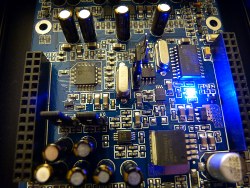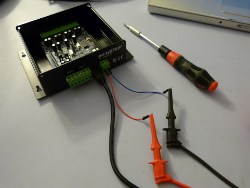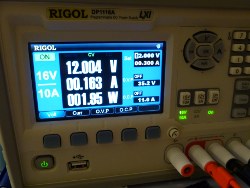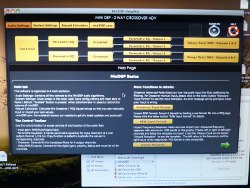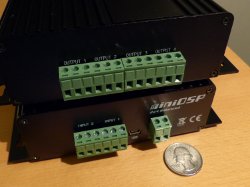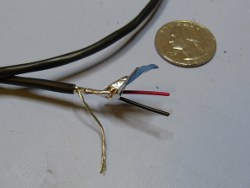Friday, April 19, 2013
MiniDSPs Arrive
The MiniDSPs arrived and I successfully connected to them using my laptop (running Mac OSX). I found the software very easy to use so my concern now is more with wiring them into the system rather than configuring the software.
I spent some time looking over the datasheet for the Analog Devices DSP and discovered that the device is capable of sampling at 192Khz, but increasing the sampling rate reduces the number of instructions that can be executed by the DSP core per clock cycle and that means fewer features (crossover, EQ, delay, etc.) can be used simultaneously. This likely explains why the MiniDSP developers chose the 48Khz sample rate. Fortunately, that's more than adequate for the automotive environment so I'm not losing any sleep over it.
I've learned a bit more about Jensen's transformer offerings in the last few weeks and have discovered the best device for my application is the DM2-ZRX and I'll need two of those units to handle the four channels coming from the headunit. The ZRX has RCA input connectors and XLR output connectors, but all of these units have a terminal block connection that can be used where appropriate, and in this case I think I'll use them for the balanced connection to the MiniDSPs simply because that's easier and cheaper than using XLR connectors.
A colleague at work brought in a couple samples of cable he uses for balanced wiring in his pro-audio setups including Belden 8451 and an equivalent Alpha Wire product. These consist of a single twisted pair wrapped with a 100% foil shield and a drain wire. Since the foil shield is installed with the conductive surface facing outward and the drain wire is bare it stays in good contact with the shield. This makes the cable trivial to terminate – just strip the PVC jacket back, peel off the exposed foil, then strip and install the signal conductors and drain wire appropriately.
These cables were smaller in diameter than I expected and I confirmed that the primary conductors were only 22 AWG, which is not necessarily ideal for screw-type terminals. Some further research uncovered an 18 AWG equivalent – Belden 8760, so that's what I plan to use. I won't need much so I'll probably buy the smallest roll I can find.
After speaking with a colleague and reading more online, I learned that my concern about impedance matching in a balanced line is not as critical at audio frequencies (anything below 1Mhz, actually), so I'm less concerned about that. My colleague said that I would still need to be concerned about possible ground loops caused by the balanced wiring between the MiniDSPs and the amplifiers, but he suggested this would have to be a trial and error process, most likely requiring me to terminate the drain wire on the MiniDSP side only.
I sent mail to PPI, Soundstream, JL Audio and Arc Audio to get some additional information about the input stages of their amplifiers. This time Arc Audio responded first and very quickly – within a few hours. Arc told me that the KS mini series is equipped with a differential input stage, meaning both the tip and ring of the RCA connector are connected to a differential amplifier (op amp or equivalent discrete components). I was surprised to learn, however, that the KAR series ties the RCA ring to ground, which means it implements a single-ended interface. Were I to use the KAR amps, I'd wind up throwing away half the signal amplitude and be subject to increased noise. Arc admitted they have plans to redesign the 300.4 to incorporate a differential input stage similar to the KS mini series but they had no timeframe for the release.
JL audio responded to the same questions and basically confirmed that most of their amps have differential input stages, including the Slash V3 I was strongly considering. The problem with JL, however, is price vs. performance and sheer size. Even their class D amps are huge and expensive. Sadly, PPI and Soundstream did not respond. This means I'm now leaning toward the KS series amps. There are several upsides should I decide to do this:
- The amps are small and should fit in the trunk with space to spare.
- They have more power (75WPC, conservatively rated) than I'll need.
- They should integrate perfectly with the MiniDSP in balanced mode.
Mileage: 234000




